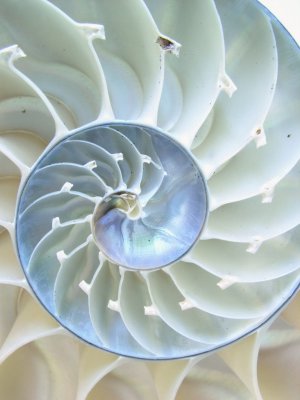 |
 |
Concept Of Beauty
In 1498, while working on The Last Supper in Milan, Leonardo da Vinci collaborated with the mathematician Fra Luca Pacioli on the book called "Of Divine Proportion".
A central concern of the book was the Fibonacci mathematical sequence,
a series of numbers in which each new entry is the sum of the previous
two (0,1,1,2,3,5,8,13,21,34,55...). A mysterious ratio of 1:1618 hovers
between any two numbers in the series, reproducing the harmonious proportion
known as "The Golden Mean". Thought to be a reflection of God's divine
intention for an ordered cosmos, it was called "The Divine Proportion",
and was given the name Phi.
This proportion (roughly 3 to 5) has intrigued mathematicians and philosophers
for centuries and was utilized by artists and architects in ancient Greece
and Egypt. It can be observed in plant and flower design, proportions in
the human body, and almost everything considered beautiful in the natural
world and it is seen in the incremental spiral of the Nautilus shell.
I believe the Fibonacci spiral design demonstrates nature's way of building
quantity without sacrificing quality. It has been deemed the most perfectly
harmonious relation between a whole and its parts and is universally
pleasing to human sensibilities. A well-proportioned human face adheres
to this ratio. The dancing Shiva of Hindu mythology holds a Nautilus shell
in one hand as an instrument through which he initiates creation.
|






